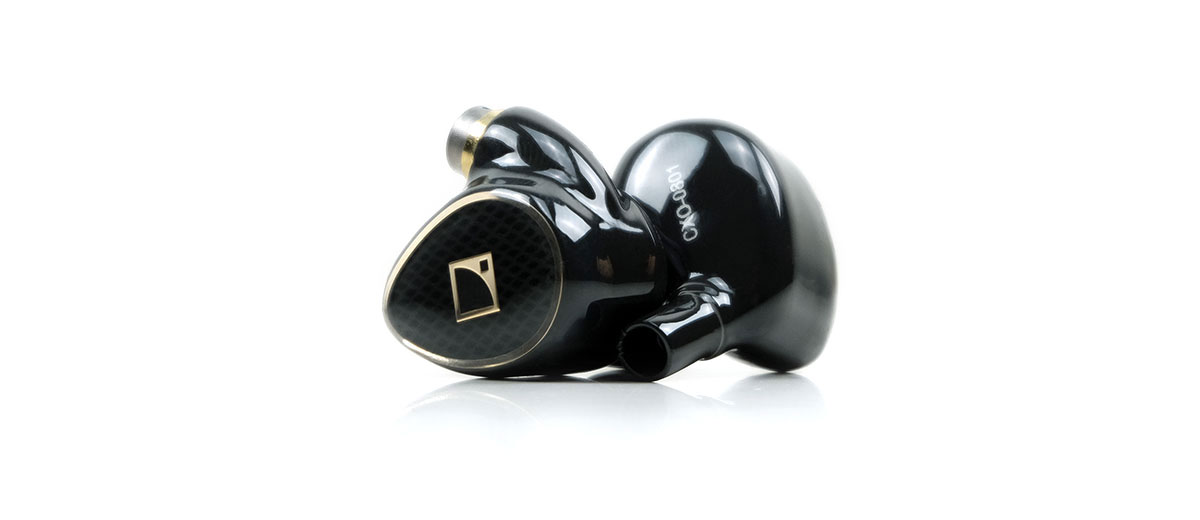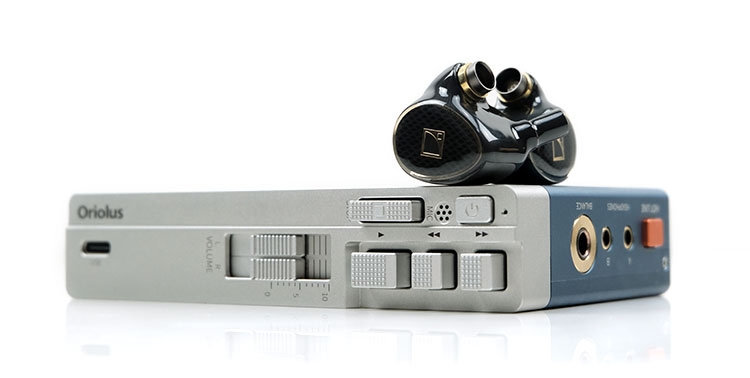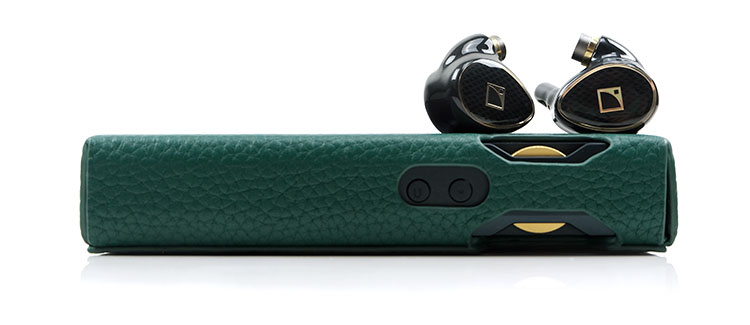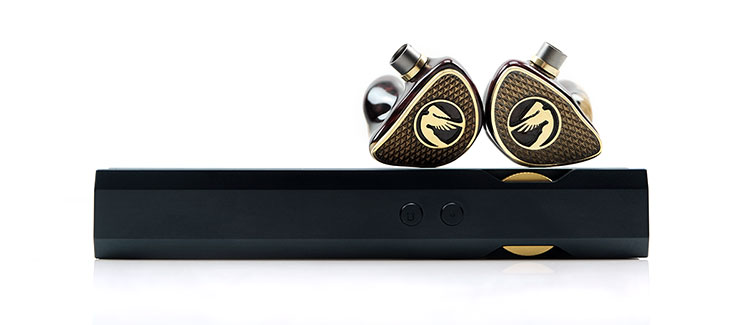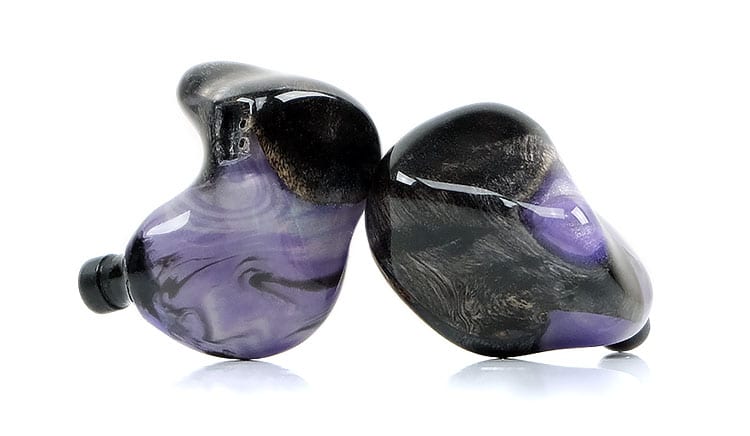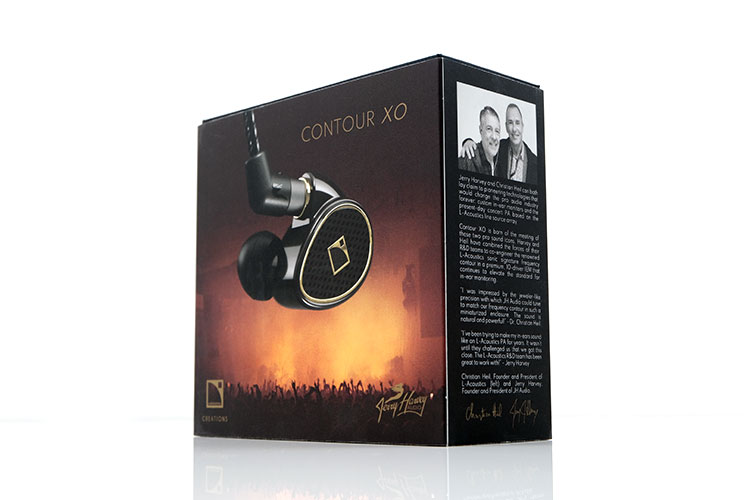Sound Impressions
Summary
The Contour XO sounds nothing like the Layla or the Jolene, two of JH Audio’s TOTL monitors. If anything, and purely from memory, Roxanne lovers will find more commonality with the Contour XO’s tuning.
This is a lively, clean, and technically very capable performer with plenty of treble reach, a clear and open midrange, and a solid and very well-defined low-end presence when called upon.
Yes, as with most JH Audio creations, that variable bass module will up the bass content or leave it quite flat depending on your preference. However, unlike the Jolene which I felt needed the dial to almost max to sound optimal, the Contour XO sounds complete and balanced at almost any level of bass save for the max dial where it becomes more about fun than monitoring.
If you want the Contour XO at its most natural-sounding then around 2pm is just perfect with a nice injection of bass warmth and body to balance out the treble energy producing a slightly smoother midrange timbre. Going down to zero gives you a more neutral low-end and allows the mids and treble to shift more into center focus.
Frequency Response
Even with minimum bass, the Contour XO low-end from 20Hz up to almost 200Hz has a gentle and long rise followed by a smooth fall to 1k. The key with the 0dB setting is the gradual sub-bass roll-off from 70Hz down to 20Hz which is where it switches to a shallower punchier bass tuning.
Throwing the dial up to 2pm pushes the sub-bass presence further up with only a very minor drop at 30Hz and 3pm levels it off perfectly for me. Maximum bass gives the Contour XO a firm sub-bass bias with a gentle L-shaped response curve down to almost 1k. It’s a bit much so I tend to leave it closer to 2-3pm to keep the Contour XO sounded powerful and balanced at the same time.
One important thing to note is the lack of lower-mids dip in the Contour XO relative to 1k. That keeps rhythm sections firmly to the fore meaning guitar work is physical and powerful sounding. Not quite the planted fundamental of the Jolene but the ‘crunch factor’ in guitar overdrive tones floating just below rock mixed voice coals is very satisfying indeed.
The Contour XO’s 2-4k is fairly neutral in relation to the presence and sub-bass region unless you have the bass dial at 0dB. You go get a small 2-3k bump that helps tease out some vocals but they are not hugely forward in terms of imaging.
From there you get a shot of big treble energy from 5k to around 8k but it is not a piercing narrow-band treble peak. Yes, it does influence the Contour XO timbre a lot but the quad pack drivers do well here to retain an excellent balance between clarity and physicality so nothing really sounds brittle here.
Timbre
The Contour XO is made for mids, particularly hard rock guitar workouts. I just love how it attacks classic Ibanez or BC Rich chord distortion sounds in such a clean and articulate manner with a short enough decay that perfectly suits rapid-fire scratch picking and finger tapping. Definitely a high-energy and almost a live-like tone.
Now, this is not a euphonic or overly warm and rounded sound. Far from it, notes are a fair bit cooler with a shorter release drawing just a little bit of warmth from that mid-bass elevation when the variable bass dial is low. You will hear some rapid decay in busier higher-pitching percussion passages, which have plenty of bite but do not hang around for the next hit to overlap.
Turning up the variable bass dial to 2-3pm will enhance the fundamental perfectly in lower register instruments to add some necessary power to string plucks and kick drums and just a bit of necessary liquid warmth to flesh out their texture. It counters that top-end energy very nicely without dulling the harmonic balance or reducing the amount of staging air.
The final factor in the Contour XO timbre is that treble. It is a spicy meatball for sure but thankfully not pushed too far up the FR to create an ethereal brittle high-fidelity tone. The Contour XO treble has some satisfying girth with a 7k peak that isn’t some narrow-band outlier.
It does produce a bit of odd-harmonic dominance so percussion timbre is to the cooler crisper side and female vocals will yield a bit of shine and a ‘larger than life’ bright sound.
Staging
You have to factor in the variable bass dial when discussing the Contour XO’s staging quality.
With the dial at 0dB the staging will be a bit flatter and lack a strong fundamental. You get some quality layering and articulation with that articulate and short BA decay but the depth and subsequent power are a bit lacking. It remains punchy but the bias is much more to the mids and treble with percussion crashes, guitar solos, and mixed voice passages dominating.
Once you dial up to around 2-3pm on the variable bass adjuster you get that necessary power and depth in the Contour XO staging right up to around 500-700Hz.
Despite the neutral imaging from 1-3k, the Contour XO midrange has tons of energy and plenty of space to breathe also. It got a very satisfying level of articulation and a complete 180 from Jolene and Layla’s more relaxed midrange presence.
It is not a honky pushed image for vocals but they do resonate very clearly benefitting from some clear space from the excellent instrumental separation and imaging which never sounds like it’s falling in on top of either male or female vocals.
Higher pitching percussion is high energy and slightly to the fore but it’s dampened very nicely so despite their aggression and brighter mix it is not actually a shape or piercing tone unless the recording is annoyingly bright in the first place. Certainly, you got some nice headroom and extension here.
Synergy
Efficiency
The Contour XO is rated at just 8Ω and 116dB SPL so not the hardest to drive with our real-world testing placing it somewhere in between the Layla, (slightly more efficient) and the Jolene, (slightly less efficient), using the SE output of the 500mW (32Ω load) capable Lotoo PAW Gold Touch.
Despite the fairly efficient rating and easy-to-drive real-world testing, the susceptibility to higher noise floors was much lower than I expected it to be. Only via the HiBy R8’s 4.4mm high gain turbo mode was there any noise detected and even then it was incredibly low.
Other DAPs such as the DPS-L2, M15, P6 Pro, and the iBasso DX300 delivered perfectly black backgrounds and low noise floors going balanced or SE with the Contour XO.
Pairings
I think you can divide the Contour XO pairings into two categories, those that deliver energy to the sound signature and those that offer the best timbre with two pairings offering both.
For example, both the M15 and the PAW Gold Touch injected some excellent energy and physicality into the Contour XO performance but it was the Touch that sounded smoother for instrumental and vocal timbre and managing to get on top of the feisty Contour XO treble tuning. The M15 was a little harder-edged and thinner for higher pitching instruments and vocal timbre.
The same could also be said of the HiBy R8 and the DX300. Here the R8 and Contour XO pairing had the better energy and weight with the DX300 perhaps sounding a little too relaxed in its delivery. However, the DX300’s upper mids and treble sounded a lot smoother and richer whereas the R8 thinned out the high-pitched vocal and percussion timbre a bit too much.
Perhaps the best was the Luxury and Precision P6 Pro, offering both excellent PRaT and timbral control to the Contour XO performance. The dynamic range and PRaT from this pairing were top-notch with a life-like timbre and some excellent note body. The P6 Pro can definitely add some serious textural detail to the Contour XO tuning.
Select Comparisons
All comparisons were primarily completed with the variable adjuster set to around 2-3pm on the dial and using the Lotoo PAW Gold Touch as the main source.
JH Audio Jolene
$1799
Technical
The Jolene was the ‘other’ big release from JH Audio in 2021 and a highly rated hybrid monitor which we reviewed back in March. Internally there are some commonalities and some huge differences with the Jolene using a hybrid dynamic and BA driver implementation and the Contour XO using an all-BA build.
In terms of similarities, both monitors use Freq|Phase™, the recessed Acoustic Sound Chamber tubing system, and a variable bass attenuator on the stock cable with a 0-15dB range. The driver selection is quite a contrast with the Jolene using no less than 4 dynamic drivers and 8 BA drivers whereas the Contour XO uses 10 BA drivers.
The grouping is thus very different also. For the lows up to 400Hz, Jolene uses a pair of 9.2mm dynamic diaphragms and for the mids, you get two smaller manifold 4.9mm, dynamic drivers, with D.O.M.E enclosures and a natural band pass roll-off at 4Khz.
The high-mids from 4kHz to 10Khz and the ultra-highs from 10KHz to 23Khz are covered by two of JH Audio’s proprietary mini quad-driver BA packs using their patented Soundrive™ Technology.
You could argue the Contour XO setup is somewhat simpler with three proprietary mini quad-driver BA packs using their patented Soundrive™ Technology: a quad low, a dual mid, and a quad high.
Design
One is custom and one is universal so quite different approaches and a bit of apple and oranges for a direct comparison. No doubt the ‘Crimson & Clover’ custom design is the more eye-catching of the two monitors in terms of materials used and pure bling. However, it is by far the bigger and heavier of the two in terms of dimensions and will stick out of your ear a bit more.
The more muted all-black of the Contour XO universal is professionally finished and more discreet though look carefully you will see one or two shared characteristics such as the gold-plated fender trimming and the 7-pin connector system.
I actually prefer the Contour XO curve in its connector stem over the perpendicular angle of the custom Jolene and just wonder if JH Audio can do that in their custom molds or not.
Both share the exact same cable with the new smaller-sized variable bass adjuster and in terms of comfort, well, a custom monitor will always beat out a universal for isolation and exact fitting. However, the Contour XO works better for those who want something a little lighter and smaller in their ear.
Performance
Two entirely different tuning directions here with Jolene’s mix of dynamic driver power and a smoother mids and treble timbre compared to the Contour XO’s tighter BA bass, energetic mids, and top-end sparkle.
Certainly, Jolene has the power right at the very lowest level with those dual dynamic drivers crafting some delicious sub-bass definition, natural texture, and decay. The Contour XO gets plenty strong also on the low-end but still offers that politer BA sub-bass slam and quicker decay.
Both hold their bass elevation quite well but the Contour XO dips a bit more into the lower mids whereas the Jolene holds and actually elevates peaking a bit higher at 1k. On the top side, both exhibit a similar profile in terms of a 5k-6k push, however, the Contour XO dB elevation is more substantial with a peak closer to 7-8k giving it a lot more sparkle and energy.
Combined with its more controlled low-end and lack of lower-mids hump, the Contour XO sounds cooler and cleaner through the mids but also more open and spacious sounding. The Jolene is a little more relaxed through the mids, sounding smoother, denser, and more physical but not as airy or forward sounding for vocals.
Just to note, both monitors sound good at 3pm on the bass variable adjuster but the Jolene really needs more dB quantity to sound optimal for me, almost to maximum level. I enjoyed max level on the variable bass dial with the Contour XO and it does bring some nice low-end heft but it still sounds quite balanced even on 0dB and perfect at 2-3pm.
JH Audio Layla
$2199
Technical
After all these years, Layla is still pitched as the flagship monitor in the JH Audio line-up. We first reviewed this back in mid-2018 and since then the Layla has had some upgrades to stay in the ring with the newer 2020/2021 models such as the Contour XO.
First, the similarities. Both are BA driver monitors and both use the newer proprietary Soundrive Technology quad driver packs. The Layla is a 12-driver compared to Contour XO’s 10 driver implementation so the grouping is slightly different. The Layla uses a quad low, a quad mid, and a quad high pack, and the Contour XO goes with a quad low, a dual mid, and a quad high.
Both monitors use triple bores with Freq|Phase stainless steel tube waveguide and these are both recessed acoustic chamber technology implementations at the tip, (on the latest editions Layla).
The sample I have here of the Layla is the older 4-pin but the latest Layla has been upgraded to 7-pin so in line with the Contour XO which also uses the latest connectors. The two monitors also share the same stock cable, the OFC 4N Silver-plated wire in black braided jacket with the variable bass module. I suspect the latest Layla version will have the smaller module also.
Design
This particular sample is Bacote Wood custom design so not a like for like in terms of design comparisons, especially since some of the shared features such as connectors and the bore system have both been upgraded on the new Layla versions. You can get a universal Layla, the Aion version via the AK web store which is much close in design to the Contour XO.
However, as with the Jolene review if you want the most accurate fitting with the superior isolation then I do suggest you have a look at the Contour XO custom alternative which starts at the same price. Just to be aware though the Contour XO custom version has the same design as the universal, with no other options.
That will also mean a much bigger unit that will stick out of your ear a bit more than the comparatively petite universal version. However, no fiddling with tips and finding that sweet spot for maximum sealing is a big sell for going custom.
Both units do come with the same high purity OFC 4N silver-plated cable with the smaller variable bass module which is an upgrade on my Layla’s older 4-wire OFC and larger bass module version.
Performance
Since both are all-BA you should be able to pick up a fairly coherent BA texture throughout but that’s as far as the similarities go. The Layla has a slightly heavier and warmer bass response, a more relaxed midrange, and a treble that is largely in balance with the bass. That means well-behaved but not as big an influence on its coloration as it is with the Contour XO.
The Contour XO, on the other hand, is much cleaner sounding, more open, and brighter in mids and treble. It has plenty of energy compared to the chilled 1k+ FR of the Layla.
It also images neutral to forward in the presence region and for most vocals, the Contour XO provides more space behind and above to breathe. The Layla has a bit of a 4-5k dip right pushing down the vocal imaging on the Layla allowing for more lower-pitching instrumental prominence.
There is simply more treble extension and energy on the Contour XO and that lifts the headroom substantially. The Layla tends to focus a bit more on the bass to mids presence, fleshing out the even harmonics and a more prominent fundamental.
If you want a bit more body and warmth with a more rounded timbre then the Layla is the correct choice. If you need a stronger mids and treble presence with a more open, airier soundstage then the Contour XO should be your preference here.
InEar ProMission X
€2089
Technical
The InEar ProMission X is the flagship monitor in the company’s line-up and one we reviewed back in 2019. Like the Contour XO, it has a strong pro audio pitch though not quite as dyed in the world as the L-Acoustics version.
Inside, it is also an all-BA build, and like the Contour XO, this also has a 10 driver per side implementation. The grouping is not officially published for the X but we know this is a 4-way crossover setup.
I would presume the ProMission X is using a mix of dual-driver, single tweeter, or full-range packs rather than the proprietary quad pack and dual-driver Soundrive Technology implementation inside the Contour XO.
The ProMission X is fairly sensitive on paper at 10Ω and 120dB and also quite close to the Contour XO which is rated even lower for load at 8Ω but slightly less sensitive to current at 116dB. Either way, both are very easy to drive from portable sources.
Design
Two very different design approaches. Both use acrylic but the X is far more quasi-custom with its strong contouring for easy ear fitting purposes and super short nozzle. Do not be fooled by that short nozzle, it is right at the end of a very elongated shell which gives it plenty of ear canal penetration.
The approach here is to get the monitor as flat as possible into the concha basin and use the main body itself as part of the sealing process. The X does incredibly well for sealing using that method.
On the flip side, the Contour XO might be a little more traditional in its design approach using a longer nozzle for canal penetration and relying more on the nozzle and tip to carry most of the sealing work. However, it seals just as good as the X. Two very different methods, same excellent outcome.
The design and feel of the two are thus far removed. The X feels a little boutique for me but the jet-black violet wood finish is still very stylish. The Contour XO is more ‘executive’ in its styling but feels a little more premium in its materials with that very sturdy -7pin connector compared to the weaker 2-pin flush socket on the X.
The 1.2m 4-wire black jacket OFC “Plastics One” type stock cable that comes with the X just will not cut it at all compared to the Litz SPC Contour XO stock. It is very resistive, dull sounding, and cheap-looking. The only resistive question you have on the Contour XO cable is put to good use in the shape of the variable bass module.
Performance
The ProMission is a sweeter, slightly smoother, and more euphonic monitor. There are a few reasons for that statement. First, the X has a flatter upper mids and lower treble and then peaks at 7-8k whereas the Contour XO has plenty of energy from 4k to 7k.
Second, on the low-end, the X does well with some good reach and weight but it does sound a little softer sub-50Hz and not quite as well defined down to 20Hz. And finally, the X has a lift from 1-3k pushing vocals a little more forward than the Contour XO’s more neutral 2-4k region.
Out of that, the X injects a bit more warmth but not the same sense of energy and sparkle. It’s a very pure tone, not as rounded as the Layla but not as physical as the Contour XO. I tend to get more into a relaxed listening mode with the X, appreciating that natural timbral coloration rather than the clean high-energy of the Contour XO.
Where does the Contour XO come to the fore? Definition, especially on the low-end where bass notes, be it synth or organic kick drums hits, sound very tight, clear, and precise. That superior layering trumps the softer imaging of the ProMission X bass.
If you want a stronger percussion presence on the top-end the Contour XO does flesh them out with more bite and energy. The X has good headroom with that upper treble peak but the lower treble flatness keeps the 8k peak at bay in favor of a pleasing and forward vocal harmonic balance.
Our Verdict
The JH Audio L-Acoustics Contour XO has got that D8000 Pro headphones sound if you understand what I mean by that. It is a cracking monitor for metalheads also.
This is a physical, articulate, and high-energy tuning that, whilst top class for detail retrieval, also never really loses a sense of joie de vivre when it comes to pure listening enjoyment. I always got that from the Final D8000 Pro headphones and I get that here also to a certain degree.
Granted, that treble presence will not be for everyone but I definitely do not call this one out as a ‘hot’ top-end or one that sounds metallic or brittle. It is brash and certainly gives some shine to the instrumental and vocal timbre but damn, it is ‘mighty fine’ for classic hard metal distortion chords and keeps vocals clean and clear also.
With the Contour XO L-Acoustics tuning, I think you have a very complementary high-end alternative monitor to the ‘chilled’ and richer tones of the Jolene or even the Layla.
JH Audio Contour XO Specifications
- Frequency Response: 10 Hz to 20 kHz
- Impedance: 8Ω
- Input Sensitivity: 116dB @ 1mW
- Noise Isolation: -26dB

